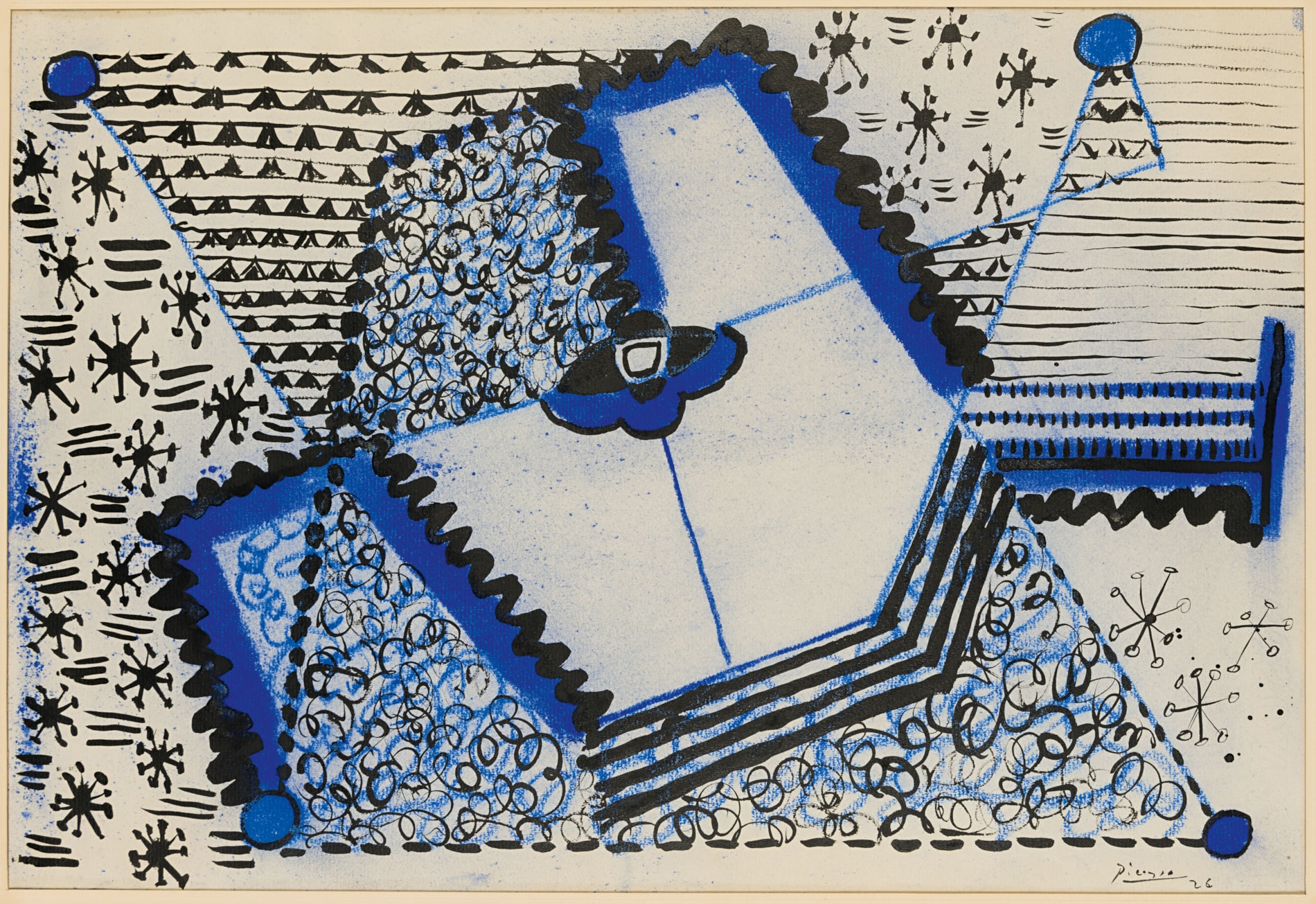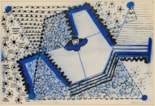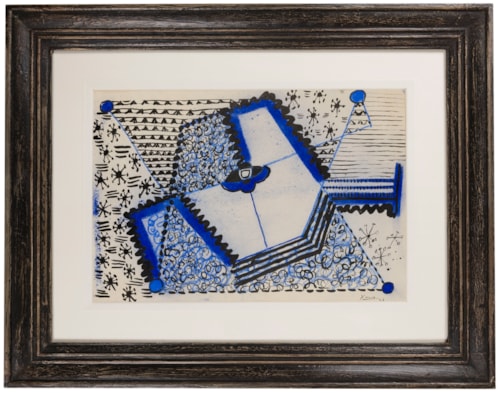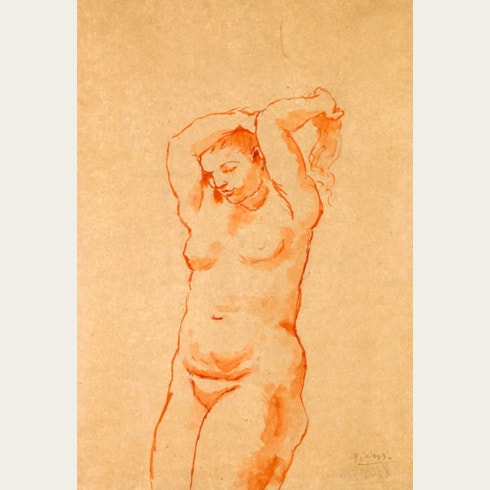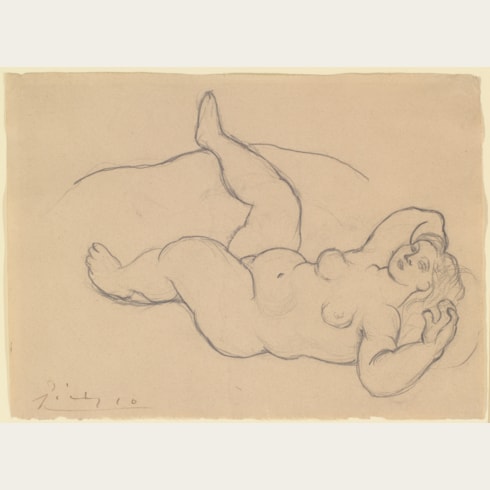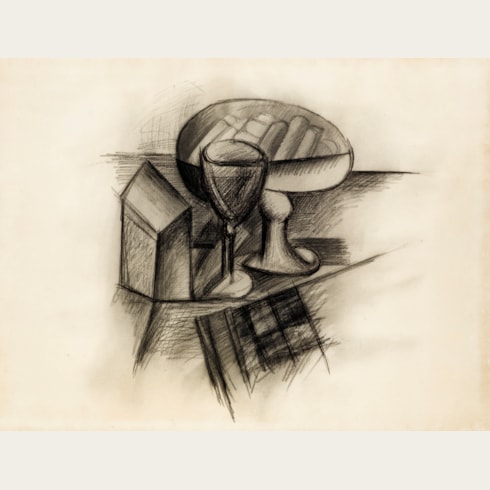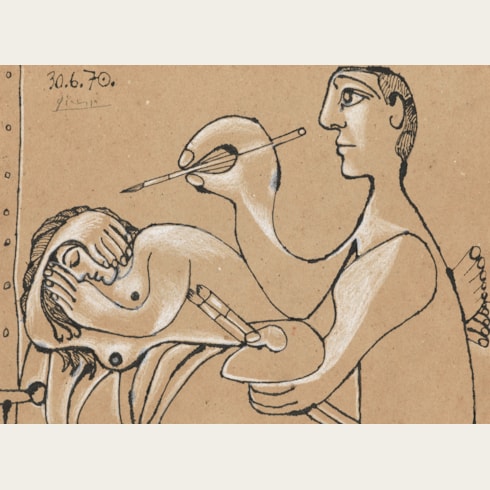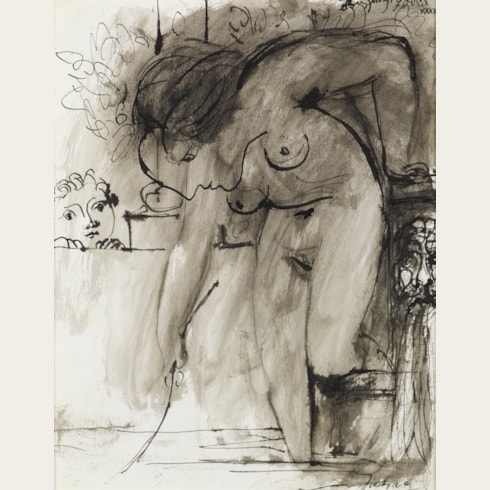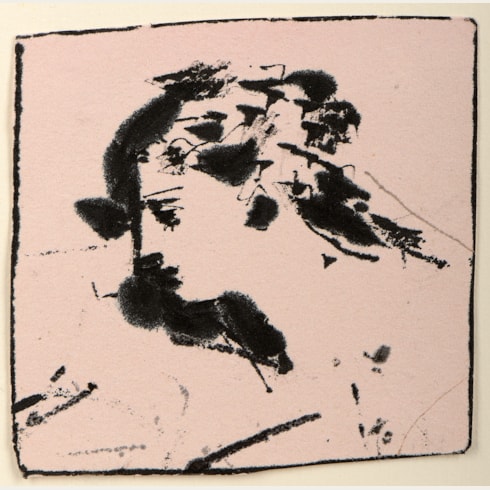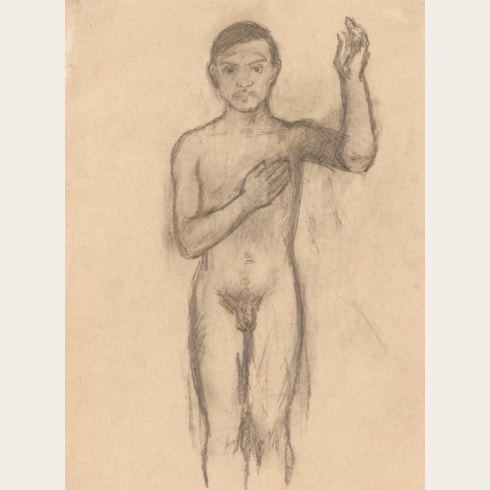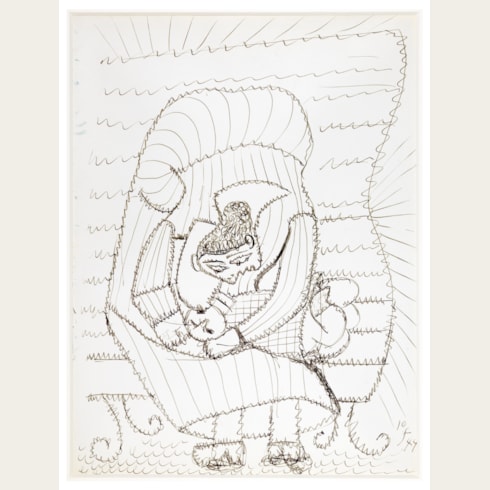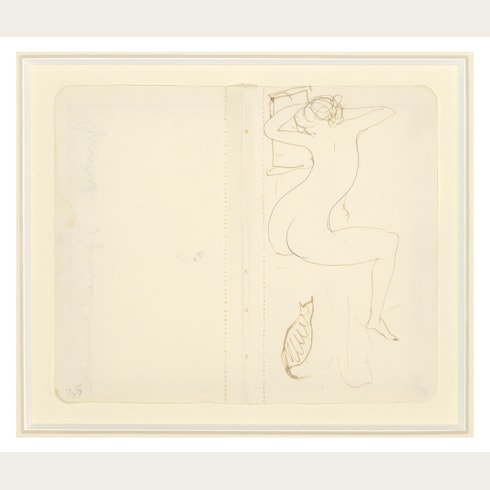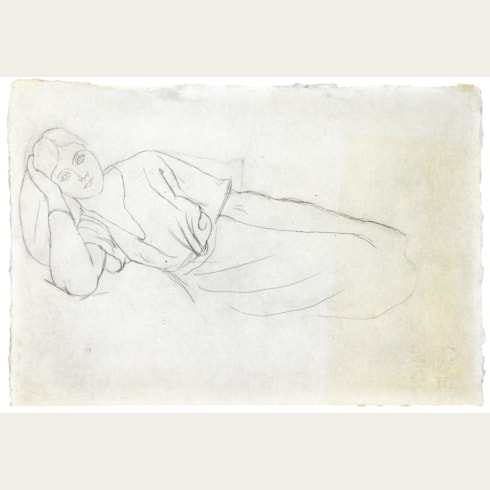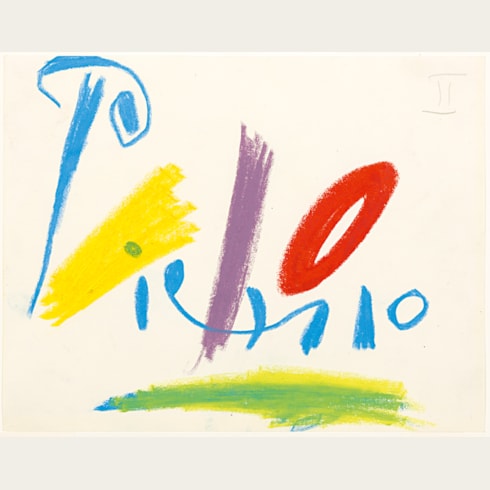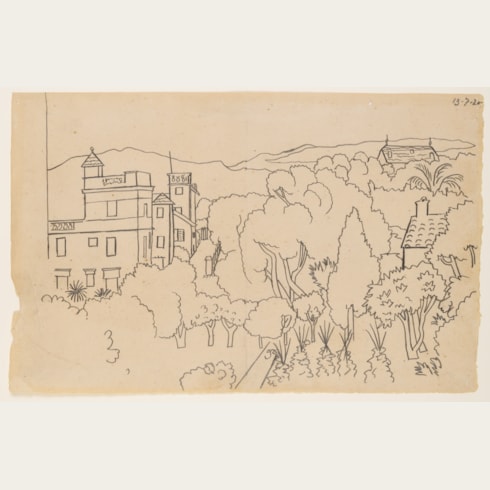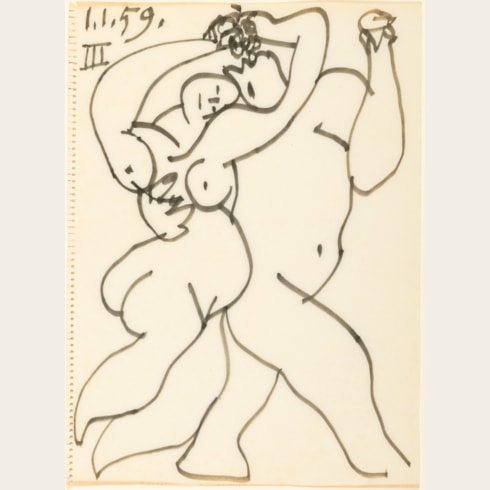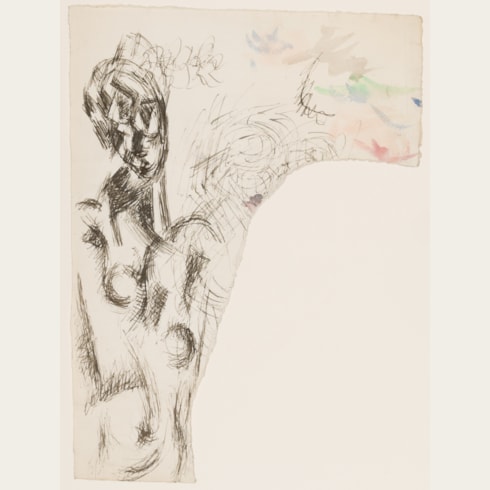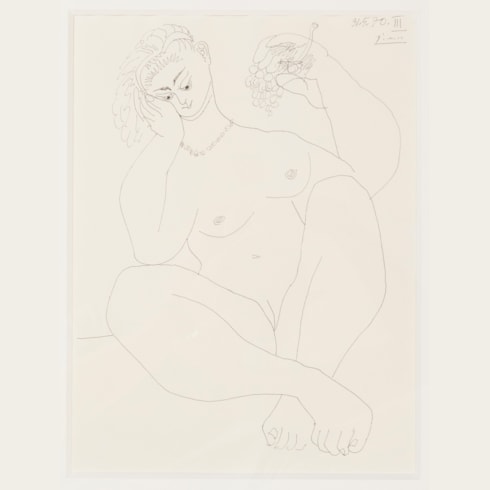Pablo PICASSO
(Malaga 1881 - Mougins 1973)
Banjo
Signed and dated Picasso / 26 at the lower right.
Inscribed [Pi]casso / banjo / 47 x 32 and numbered No. 9988 on a label pasted onto the old backing board.
313 x 465 mm. (12 3/8 x 18 1/4 in.)
Drawn in Paris in March or April 1926, this large Banjo is one of three closely-related drawings of stringed instruments of the same date. The other two drawings - one depicting a zither, today in the Philadelphia Museum of Art, and the other a mandolin, which appeared at auction in Switzerland in 2005 - are likewise drawn in a combination of blue pastel and black ink, and are of identical dimensions to the Banjo. A handful of other drawings by Picasso of this period can also be related to this group; a vertical drawing of a mandolin, signed and dated 1926 and executed in blue pastel alone, a drawing of a guitar, also in blue pastel, and a third pastel drawing of a guitar, also dated 1926 and likewise of the same dimensions as the present sheet.
The last of these drawings has in turn has been regarded as a preparatory sketch for Guitar; an assemblage made up of a washcloth, newspaper, string and nails on painted canvas, today in the Musée Picasso in Paris. The Guitar is one of a small group of around a dozen or so fetish-like assemblages or ‘picture reliefs’ of guitars created by Picasso in the spring of 1926, using rags, washcloths or pieces of old shirts, as well as nails, string, cardboard and, in one instance, a knitting needle, to create different guitar-like forms. As the artist’s biographer John Richardson has stated, ‘Early in March, Picasso cobbled together a series of fetishes – two large (130 x 96 cm) and ten smaller ones – out of rags, nails, and other junk. These fetishes are all ostensibly guitars – anthropomorphic ones.’ Part sculpture, part collage, all of these works – ‘suggesting threatening fetish objects provoking a psychic shock comparable to a Surrealist found object’ – were kept by the artist until his death, and most are today in the collection of the Musée Picasso in Paris.
As the scholar Josep Palau i Fabre has written of the artist’s work of this period, ‘During the spring of 1926, Picasso furiously attacked the theme of the guitar, as if all the versions he had so far given us were not enough, as if he still had to extract unprecedented notes from the instrument. And he did. But what notes! They are hair-raising. This is not a return to the guitars of Cubism in order to renounce or contradict those he had been conceiving recently; it goes much further beyond. The guitar he now offers us is incapable of producing pleasant, harmonious music; it represents the destruction of all the previous guitars.’
‘I do not know if I am a great painter, but I am a great draughtsman.’ (Picasso to Max Jacob).
Provenance
Comtesse Eliane de Beaumont, Neuilly-sur-Seine
Acquired from her by a private collector in c.1980
Thence by descent to a private collection
Anonymous sale, Paris, Christie’s, 20 May 2009, lot 93
Private collection.
Literature

